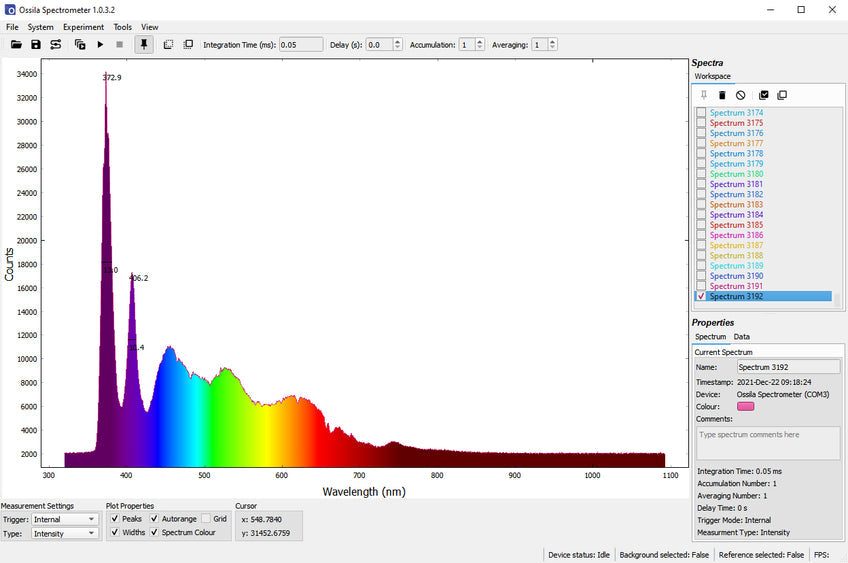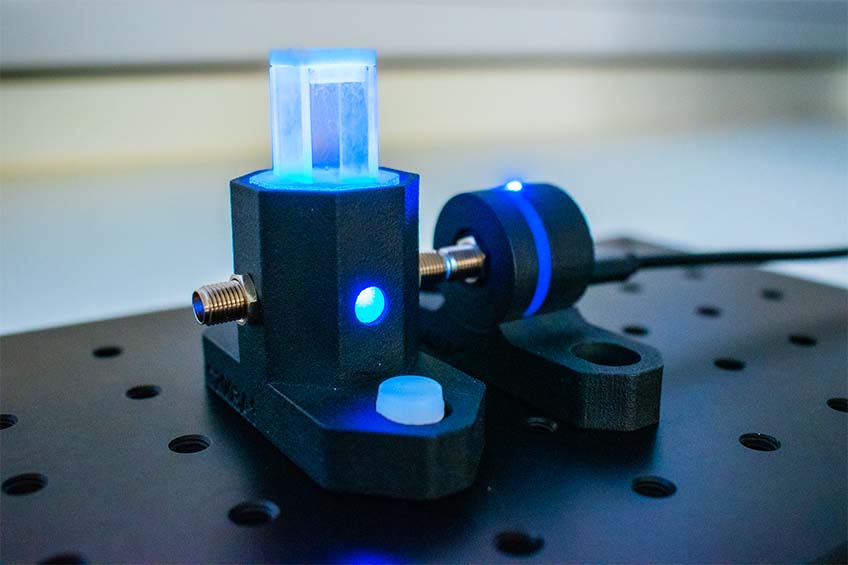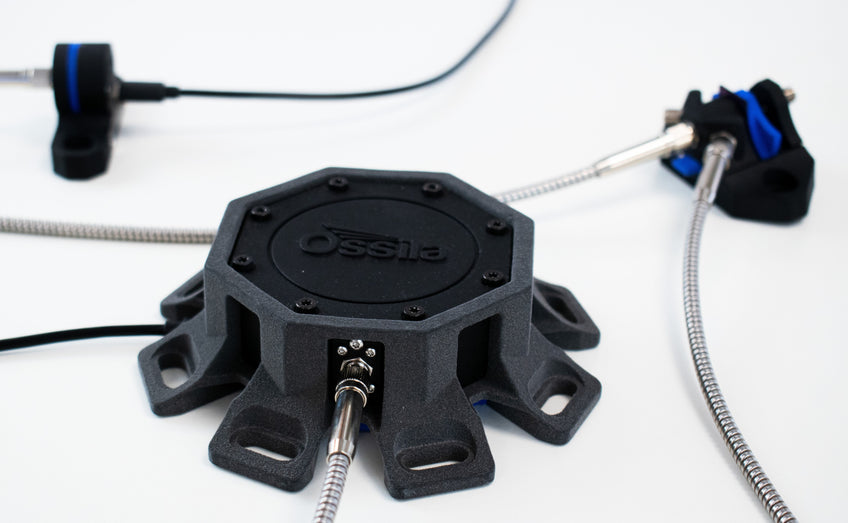How to Choose a Spectrometer

An optical spectrometer is an essential instrument used for conducting any optical material research, as it allows you to quickly and easily characterize your samples. Our USB spectrometer is a powerful but simple tool that can help you quickly and easily characterize optical materials.
When choosing an optical spectrometer, it is important that you consider the specific needs of your project as well as the overall objectives of your research. Some factors that you should consider when choosing an optical spectrometer are the range of wavelengths you need to measure, the size and weight of the instrument, and its data collection capabilities. Additionally, you should also take into account the cost and overall performance of the spectrometer. By considering all of these factors, you are ensuring that you choose the best spectrometer for your research needs.
Factors to Consider when Choosing an Optical Spectrometer include:
Wavelength Range
The wavelength range that you want to measure over is the first thing that you should consider when buying a spectrometer. This will depend on the samples that you wish to analyse as well as the properties or transitions you want to observe.
With optical spectroscopy, you can measure wavelengths of light within or near the visible spectrum. This can extend as low as 190 nm up to the near infrared at 1100 nm. However, the exact wavelength range of each spectrometer will vary according to its individual specifications. The Ossila USB Spectrometer can measure light between the wavelengths of 320 nm - 1050 nm which corresponds to the transition energies of 1.1 eV - 3.8 eV. Within these wavelengths, you can observe specific energy transitions of conjugated organic molecules.
Alternatively, infrared (IR) and near-infrared (NIR) spectroscopy are also used to investigate vibrational and rotational transitions. NIR corresponds to wavelengths of 700 nm - 2500 nm, and these wavelengths correspond to vibrational relaxation transitions. IR spectroscopy corresponds to 2500 nm - 5000 nm transitions, which tend to be the energy transitions associated with internal conversion transitions. You can measure energy transitions within these wavelengths using NIR/IR spectroscopy or Raman spectroscopy.
You can use general optical spectrometers, like ours, to study a wide range of materials, such as chromophores, organic dyes, and visible-light fluorescent molecules. Most light-emitting or light-absorbing devices (OLEDs, PV, LEDs, visible lasing materials) react to, absorb, or emit signals within the visible light region. An optical spectrometer can be extremely helpful in assessing their optical properties.
The Ossila USB Spectrometer and its accompanying software allow you to start taking fluorescence, absorbance, and reflectance measurements immediately.

USB Spectrometer

Light or Excitation Source
You will need different light sources for different types of optical measurements. For example, in absorbance spectroscopy or diffuse reflectance measurements, you will need a light source that covers a broad range of wavelengths.

However, for emission spectroscopy (photoluminescence, fluorescence, lasing), you need to use a high energy excitation source at a particular wavelength. You could use a UV laser or a high-intensity UV LED for example. This high energy source will stimulate electrons into their excited state, ready for emission. Some samples may require a non-radiative excitation supply. This will be the case for electroluminescence measurements as electrons need to be excited by power supply which is applied across the optical device.
The Ossila Optical Spectroscopy Kit comes with both a broadband white light source, and the UV light source. This is so you can conduct a wide range of different optical measurements and can be especially useful when fully characterizing optical materials. Having access to both light sources means that you will be able to measure both absorbance and PL. If you would like, you can also buy these light sources individually.
Resolution and Sensitivity
Two important features of a spectrometer are its resolution and its sensitivity. Resolution determines how close two spectral peaks can be while still being resolved as two peaks. Sensitivity refers to how efficiently a spectrometer can detect light. These two measurements are both determined by entrance slit width of a spectrometer and so, are linked. As this slit width decreases, resolution increases, however, sensitivity decreases.
You can get spectrometers with interchangeable slits, but this comes with an increased cost. Most general spectrometers are designed to maximise both sensitivity and resolution but must compromise somewhere in the middle. The Ossila spectrometer uses a 25 µm slit width, which is used in most general spectrometers. This allows you to take high-resolution measurements while maintaining decent measurement sensitivity. It also keeps the spectrometer easy-to-use and low cost.
There are also some actions you can take during measurements to increase sensitivity. For low signal samples, you can use optical fibers to direct the output light straight to the spectrometer. Additionally, the integration time of measurements can be increased, and multiple spectra can be accumulated to increase signal intensity.
Measurement Speed and Integration Time
The speed of a spectroscopy measurement depends on both the optics of the spectrometer and the integration time set by the user.
Monochromator spectrometers have a very slow measurement speed. As the detector will be measuring the intensity of light at each wavelength individually, measurements from these spectrometers will have an increased sensitivity. However, this long measurement speed makes it difficult to measure dynamic processes and will increase overall experiment time, especially if you are measuring lots of samples.
Linear detector spectrometers measure the intensity of all wavelengths of light simultaneously. This means that spectrometers with linear detector arrays (like the Ossila Optical Spectrometer) will have a faster measurement speed than monochromator spectrometers. However, using linear detectors may limit spectral sensitivity. You can increase the sensitivity of linear spectrometers by increasing the integration time of your measurement.
It is likely that you will only require very fast measurement speeds if you are doing pulsed spectrometry or want to measure extremely dynamic processes. If you require this ultra-fast spectroscopy, you will need a specialist spectrometer with especially sensitive detectors. However, these do tend to be expensive. If you want to perform standard steady-state optical spectroscopy, you will not need this level of measurement speed.
Our spectrometer is designed to have a quick measurement speed while still taking good quality spectra. You can easily optimise integration times with our Ossila Spectroscopy Software. You can also use the spectral accumulation or averaging functions to improve the quality of your spectra while maintaining short measurement times.
Price
Some spectrometers that offer more advanced features require more expensive CCDs and lenses. These spectrometers will inevitably have a higher price tag. It is worth evaluating if you need these sophisticated optics or if a more compact, adaptable, and affordable spectrometer will measure your samples as well as you need.
Acquiring all the accessories needed to set up a modular spectrometer for optical spectroscopy measurements (sample holder, light sources, etc.) can also quickly increase costs. In many cases, you will need to source these added elements separately from where you buy your spectrometer.
We designed the Ossila spectrometer to perform research-grade spectroscopy at a low cost, so you can start your optical experiments as soon as possible, no matter your budget. If you also buy the optical spectroscopy kit, you will further increase the value of your system and set yourself up with all of the necessary equipment to start measuring immediately.

Dimensions and Adaptability
Optics benches can quickly become very crowded, so using space efficiently is important. Spectrometers with sophisticated optics or enclosed systems will often have a larger lab footprint.
Some optical systems have a rigid, enclosed experimental set-up. This allows all optical elements to remain protected and well- calibrated, as well as helping to ensure your measurements stay consistent. The dark casing on these systems will also reduce background light noise. These spectrometers are built so that you just put your sample in, and press go. However, they do not allow for much flexibility in how or exactly what you measure. Also, if one internal component inside an enclosed spectrophotometer breaks, it is difficult to find and repair the source of the issue.
Modular spectrometers, such as the Ossila Optical Spectrometer, have a smaller lab footprint and are more adaptable in terms of the types of measurements they can perform. These spectrometers can be combined with filters and lenses on any optical bench to optimise your measurements. They are designed so that they can be adapted into your optics labs easily.
With the Ossila Optical Spectrometer, you can use the various compatible accessories to build an optical measurement system that meets your needs. Our spectrometer is also compatible with many other optical accessories, so it will be a great addition to your optics lab.
USB Spectrometer

Learn More
 Light Sources for Spectroscopy
Light Sources for Spectroscopy
Optical spectroscopy concerns light in the UV, visible and IR regions of the electromagnetic spectrum which is either emitted by, or interacts with, a sample. With our USB spectrometer, it can be performed using a range of different light sources.
Read more... Python for Spectroscopy: Spectra Data Visualization
Python for Spectroscopy: Spectra Data Visualization
Often when working with optical spectroscopy data, data processing can be made faster and more consistent using a programming tool such as Python. These are the steps that our researchers follow when processing multiple spectra that were taken using the Ossila USB Spectrometer.
Read more...